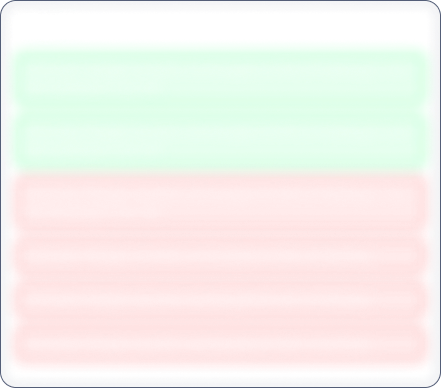Month End Sale 60% off
EPack Prefab Technologies

No Data Available
Investor Sentiment
EPack Prefab Technologies Share price and Fundamental Analysis
Key Metrics
Included In
Stock Returns
Stock Heatmap

No Stocks
Smart Score

Unlock Smart Score
See Detailed Analysis & Insights


Unlock Insights
See Detailed Analysis & Insights
Technicals
Returns Calculator
If you would have investedResearch Report
No Research Report
Corporate Action

No Data Available
Financials
Key Ratios
ROE
Avg ROE (3 Yrs) : NaN%
ROCE
Avg ROCE (3 Yrs) : NaN%
ROA
Avg ROA (3 Yrs) : NaN%
NPM
Avg NPM (3 Yrs) : NaN%
Dividend History
5 Year FactSheet
Documents

No Data Available
News
EPack Prefab Technologies Management and History
Company Management


Unlock Management Data
See Detailed Analysis & Insights
Company History
EPack Prefab Technologies Limited was originally incorporated as 'E-Pack Polymers Private Limited' as a Private Limited Company dated February 12, 1999, issued by Registrar of Companies, at New Delhi, India. Subsequently, Company name was changed to 'EPack Polymers Private Limited' and a fresh Certificate of Incorporation dated October 13, 2020, was issued by the Registrar of Companies, Kanpur situated at Kanpur, Uttar Pradesh, India. Thereafter, Company's name was changed to 'EPack Prefab Technologies Private Limited', dated December 04, 2024. Subsequently, the name of the Company was changed from 'EPack Prefab Technologies Private Limited' to 'EPack Prefab Technologies Limited' and a fresh Certificate of Incorporation dated December 11, 2024, upon the conversion was issued by the RoC.
The Company is presently operating into two business verticals, i.e. (i) Pre-Fab Business, wherein it provide complete solutions to customers on turnkey basis including designing, manufacturing, installation and erection of pre-engineered steel buildings, pre-fabricated structures and its components in India and overseas; and (ii) manufacturing of expanded polystyrene sheets and blocks (also referred as 'EPS Block Molded' products and 'EPS Shape Molded' products) for various industries such as construction, packaging, and consumer goods.
In 2000, the Company established its first EPS Packaging manufacturing facilitates equipped with 8 molding machines. In 2002, it expanded the EPS Packaging manufacturing facilities by adding six more molding machines. In 2005, it further expanded the production plant by adding 85,000 square feet. In 2007, it added four more molding machines to the manufacturing facilities. In 2008, it started production of Sandwich Insulated Panel/PUF Panels for telecom structures. In 2011, it diversified the operations by venturing into prefab building. In 2012, it started making rockwool/glass wool and Sandwich Insulated Panels. In 2014, it established a plant for for pre-fabricated panels, doors, windows, structures, etc. in Greater Noida. In 2017, it expanded the Unit 2 by setting up a complete built-up section line. In 2018, it set up design and detailing team at Greater Noida (Uttar Pradesh). In 2022, it set up Unit 3 for manufacturing of built-up section and installed a steam turbine. The Company set up Unit 4 in Andhra Pradesh and further set up a 3rd design and detailing office in Vishakhapatnam in 2024.
The Company is planning a fresh issue by raising funds aggregating to Rs 300 Cr and by issuing upto 10,000,000 Equity Shares of Rs 2 each through Offer for Sale by way of its Initial Public Offering.
EPack Prefab Technologies Share Price
EPack Prefab Technologies share price reflects investor sentiment toward the company and is impacted by various factors such as financial performance, market trends, and economic conditions. Share price is an indicator which shows the current value of the company's shares at which buyers or sellers can transact.
EPack Prefab Technologies Market Cap
Market capitalization of EPack Prefab Technologies indicates the total value of its outstanding shares. Marketcap is calculated by multiplying share price and outstanding shares of the company. It is a helpful metric for assessing the company's size and market Valuation. It also helps investors understand how EPack Prefab Technologies is valued compared to its competitors.
EPack Prefab Technologies PE Ratio
EPack Prefab Technologies PE ratio helps investors understand what is the market value of each stock compared to EPack Prefab Technologies 's earnings. A PE ratio higher than the average industry PE could indicate an overvaluation of the stock, whereas a lower PE compared to the average industry PE could indicate an undervaluation.
EPack Prefab Technologies PEG Ratio
The PEG ratio of EPack Prefab Technologies evaluates its PE ratio in relation to its growth rate. A PEG ratio of 1 indicates a fair value, a PEG ratio of less than 1 indicates undervaluation, and a PEG ratio of more than 1 indicates overvaluation.
EPack Prefab Technologies ROE (Return on Equity)
Return on Equity (ROE) measures how effectively EPack Prefab Technologies generates profit from shareholders' equity. A higher ROE of more than 20% indicates better financial performance in terms of profitability.
EPack Prefab Technologies ROCE (Return on Capital Employed)
Return on Capital Employed (ROCE) evaluates the profitability of EPack Prefab Technologies in relation to its capital employed. In simple terms, ROCE provides insight to investors as to how well the company is utilizing the capital deployed. A high ROCE of more than 20% shows that the business is making profitable use of its capital.
EPack Prefab Technologies Total Debt
Total debt of EPack Prefab Technologies shows how much the company owes to either banks or individual creditors. In simple terms, this is the amount the company has to repay. Total debt can be a very useful metric to show the financial health of the company. Total debt more than equity is considered to be a bad sign.
EPack Prefab Technologies Debt to Equity Ratio
The Debt-to-Equity (DE) ratio of EPack Prefab Technologies compares its total debt to shareholders' equity. A higher Debt to Equity ratio could indicate higher financial risk, while a lower ratio suggests that the company is managing its debt efficiently.
EPack Prefab Technologies CAGR (Compound Annual Growth Rate)
CAGR shows the consistent growth rate of EPack Prefab Technologies over a specific period, whether it is over a month, a year, or 10 years. It is a key metric to evaluate the company’s long-term growth potential. Main metrics for which CAGR is calculated are net sales, net profit, operating profit, and stock returns.
EPack Prefab Technologies Technical Analysis
Technical analysis of EPack Prefab Technologies helps investors get an insight into when they can enter or exit the stock. Key components of EPack Prefab Technologies Technical Analysis include:
Support Levels (S1, S2, S3)
There are usually multiple support levels, but the main support levels for a stock are S1, S2, S3. Support levels indicate price points where stock might get support from buyers, helping the stock stop falling and rise.
Resistance Levels (R1, R2, R3)
There are usually multiple resistance levels, but the main resistance levels for a stock are R1, R2, R3. Resistance levels represent price points where EPack Prefab Technologies shares often struggle to rise above due to selling pressure.
EPack Prefab Technologies Dividends
Dividends refer to the portion of the company’s profits distributed to its shareholders. Dividends are typically paid out in cash and reflect EPack Prefab Technologies ’s financial health and profitability.
EPack Prefab Technologies Bonus Shares
Bonus shares are usually given by companies to make the stock more affordable, increase liquidity, boost investor confidence, and more.
EPack Prefab Technologies Stock Split
Stock split increases the number of its outstanding shares by dividing each existing share into multiple shares. When the company offers a stock split, the face value of the stock reduces in the same proportion as the split ratio.
EPack Prefab Technologies Financials
The financials of EPack Prefab Technologies provide a complete view to investors about its net sales, net profit, operating profits, expenses, and overall financial health. Investors can analyze financial data to assess the company’s stability and also understand how the company has been growing financially.
EPack Prefab Technologies Profit and Loss Statements
The profit and loss statement of EPack Prefab Technologies highlights its net sales, net profit, total expenditure, and operating profits in the current financial year. This Profit and Loss statement is crucial for evaluating the profitability and financial stability of EPack Prefab Technologies .
EPack Prefab Technologies Balance Sheet
The balance sheet presents a snapshot of EPack Prefab Technologies ’s assets, liabilities, and equity of shareholders, providing insights into the financials of the company.
EPack Prefab Technologies Cashflow Statements
Cashflow statements track the company's cash inflows and outflows over a period. It is an essential tool for understanding how well the company manages its liquidity and finances.


